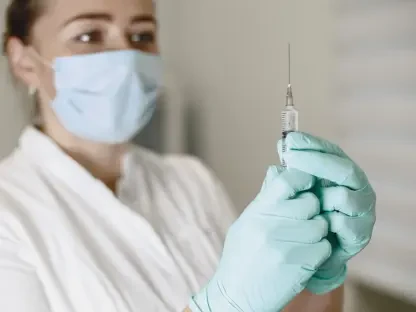Faisal Zain, a leading expert in healthcare policy and medical technology, joins us today to unravel some of the significant developments in vaccine innovation and policy shifts. With extensive experience in the manufacturing of diagnostic and treatment devices, Faisal has been closely monitoring the evolving landscape of mRNA technology and public health preparedness. Today, we delve into the implications of a recent decision by the U.S. government to cancel a contract with Moderna for an avian influenza vaccine and explore the broader impact on pandemic preparedness.
Can you explain why the U.S. government canceled the Moderna contract for the avian influenza vaccine?
The cancellation seems to stem from a strategic shift in federal vaccine policy under the new administration. While it wasn’t entirely unexpected, the decision aligns with the recent changes announced by the HHS Secretary, who has been reassessing funding priorities. It appears the department is focusing resources differently, possibly due to a reassessment of current public health risks and a desire to allocate funds to initiatives with immediate perceived threat levels.
How does the mRNA technology used by Moderna offer a faster approach compared to traditional vaccine methods?
mRNA technology revolutionizes the vaccine development process by significantly reducing the time from pathogen identification to vaccine deployment. Unlike traditional methods that rely on growing the virus in chicken eggs, which is time-consuming, mRNA technology can design and produce vaccines rapidly once a virus’s genetic sequence is known. This speed is crucial in responding quickly to pandemics and emerging infectious disease threats.
What were the initial terms and financial commitments of the contract between HHS and Moderna for the avian flu vaccine?
Originally awarded in the summer with a $176 million commitment, the contract expanded to $590 million by January with funds from multiple federal agencies. This substantial financial backing was intended to support the vaccine’s development, aligning with the government’s efforts to bolster pandemic preparedness using cutting-edge biotechnology like mRNA vaccines.
Could you provide more details about the Phase 1/2 trials for Moderna’s mRNA-1018 avian flu vaccine?
The Phase 1/2 trials involved approximately 300 healthy adults and focused on the mRNA-1018 vaccine targeting the H5 avian influenza subtype. Participants received two doses 22 days apart. The trials revealed a promising immune response, with nearly 98% of participants achieving protective antibody levels just three weeks after the second dose. Importantly, the vaccine demonstrated a good safety profile, with most adverse events being mild to moderate.
How did regulatory changes, like those announced by HHS Secretary Robert F. Kennedy, Jr., influence federal funding decisions for vaccines?
Regulatory changes have brought about a reevaluation of which vaccines receive federal backing and how they fit into broader public health strategies. With a new emphasis on prioritizing high-risk groups for vaccination, these shifts likely influenced the decision to cancel funding for vaccines perceived as having a lower immediate threat, like the avian flu vaccine.
How has Moderna’s financial position been affected by changes in COVID-19 vaccine sales and federal policies?
Moderna has experienced a decline in revenue from its COVID-19 vaccine, Spikevax, due to reduced demand outside the peak seasons and shifting federal policies on vaccine recommendations. This decline has affected its overall financial standing, with a notable decrease in its cash reserves, adding pressure to seek alternative funding sources for new vaccine developments.
What alternative funding strategies is Moderna considering to continue the development of the avian flu vaccine?
Moderna is exploring various avenues to secure financial support, including partnerships with other companies or international health organizations, seeking investment from private sector investors, and potentially leveraging its existing capital for strategic research and development initiatives, all while remaining committed to using its mRNA technology against future pandemics.
Given the CDC’s assessment of the current bird flu risk, why does Moderna believe that the development of the H5 avian flu vaccine is still crucial?
Despite the low public health risk classified by the CDC, Moderna sees the H5 avian flu vaccine as vital for future pandemic preparedness. The ongoing outbreaks among birds and the sporadic human cases highlight the potential for future mutations that could lead to human-to-human transmission. Proactively developing effective vaccines remains a cornerstone of safeguarding public health against unforeseen threats.
Could you discuss the broader implications of mRNA technology for pandemic preparedness, according to Moderna’s perspective?
mRNA technology holds immense potential for revolutionizing how we respond to pandemics. Its adaptability and rapid production capabilities enable it to tackle various pathogens, offering a swift response to emerging threats. This flexibility makes mRNA a cornerstone technology in building resilience against future pandemics in an increasingly interconnected world.
How does the company plan to address the uncertainty caused by the termination of funding from the HHS?
In response to the uncertainty, Moderna is committed to meticulously analyzing its strategic options and exploring alternative development paths. The company aims to leverage its scientific advancements, continue robust research efforts, and engage with global partners to maintain its progress in developing essential vaccines even amid funding challenges.
What is your forecast for mRNA technology in the future of vaccine development?
The future of mRNA technology in vaccine development is incredibly promising. Its capability to quickly adapt to new pathogens will likely see it become a staple in addressing both current and emerging infectious diseases. We can expect continued innovation and expanded applications, potentially leading to groundbreaking advancements in not just infectious disease control, but also in personalized medicine and oncology.









